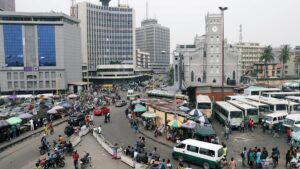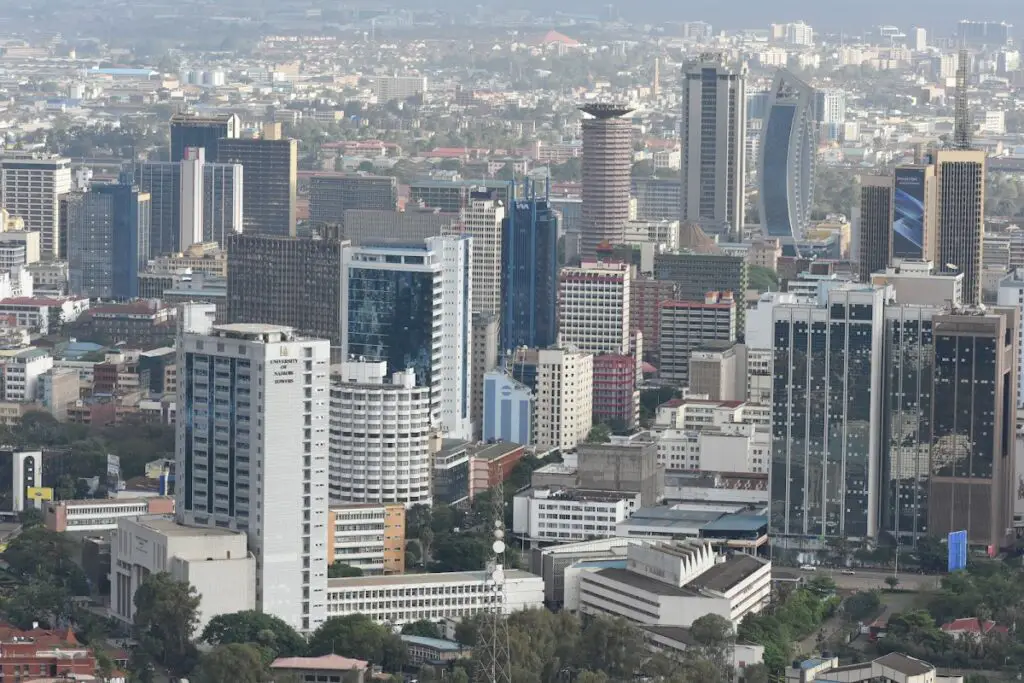- Kenya’s private sector activity and new orders rises for the first time in six months.
- Selling price inflation hits long-run average as cost burdens ease.
- However, PMI shows lowest confidence towards future output in the survey’s history.
Kenya’s business conditions improved in February, expanding private sector activity due to a further softening of inflationary pressures supported a fresh increase in new order volumes.
Stanbic Bank Kenya Purchasing Managers Index (PMI) for February registered at 51.3 per cent as lower fuel prices helped to cool input cost inflation to a 26-month low, supporting the softest increase in output prices for one-and-a-half years.
Improving business conditions are said to have led Kenyan companies to expand staffing levels at a faster rate albeit by largely hiring casuals pointing to a cautionary stance towards hiring permanently.
Nevertheless, confidence regarding future activity fell to a survey low, suggesting a broad degree of uncertainty that activity growth will be sustained.
Kenya’s business conditions: February PMI hits 51.3%
The headline figure derived from the survey is the Purchasing Managers’ Index. Readings above 50.0 signal an improvement in business conditions on the previous month, while readings below 50.0 show a deterioration.
The headline index rose for the third consecutive month in February, taking it above the 50.0 neutral threshold for the first time since last August.
At 51.3, up from 49.8 in January, the index was also at its highest level in just over a year, with positive directional influences seen in all five of its sub-components.
The greatest movement was found in the Output sub-index in February, which rose to its highest for 13 months and pointed to a moderate expansion in private sector activity.
“There was a notable expansion in private sector activity in February, with output increasing in agriculture, manufacturing, and services. However, construction and wholesale and retail activity slipped,” said Christopher Legilisho, Economist at Standard Bank.
Read also: Kenya’s economy strengthened in 2023, forecast to grow by 5.2% this year — World Bank
Improved stock levels
Similar findings were also seen with respect to new orders, as companies reported that improving client demand drove the fastest upturn in sales since January 2023.
“Increased new orders spurred inventory stocking, with some firms stiltedly wanting to avoid product shortages during the year. However, expectations for 2024 remain subdued; the index for future expectations hit its weakest level on record,” Legilisho said.
Firms additionally linked this to new product releases and improved stock levels, which rose slightly, as well as the positive impact of relaxed inflationary pressures.
Notably, input costs faced by Kenyan firms rose at the weakest pace in over two years in February, as inflation continued to ease from its record high last October.
Falling fuel prices were reportedly a key contributor to lower cost burdens, although expenses still rose sharply overall amid mentions of currency issues and higher VAT payments.
The slowdown allowed firms to raise their selling charges to a softer degree. Charge hikes eased to the weakest recorded for a year-and-a-half and were aligned with the survey’s long-run trend.
“On the pricing front, firms noted both input and output price pressures easing due to moderating purchase costs, fuel prices declining, and the shilling appreciating during February. Staff costs were flat in February, although staffing levels increased for a second month running,” he said.
Rising prices continued to restrict cash flow
Nevertheless, rising prices continued to restrict cash flow and spending power, according to survey comments, which meant that total sales growth was only marginal.
Sector data signaled that construction and wholesale and retail were still greatly impacted, with sales declining sharply in these segments.
Furthermore, overall business sentiment was at its lowest level on record in February, as companies generally refrained from projecting an increase in activity over the coming year.
Only six per cent of companies were optimistic of an upturn. Despite this, employment levels rose in February on the back of higher new order intakes, with firms citing the hiring of casual workers to meet workloads.
Read also: Blockchain for Employment: Africa’s Leap into the Gig Economy
Economic growth to remain strong in 2024
Staff increases were modest, but the fastest since last August. Purchases of inputs also expanded, ending a five-month run of decline, whereas improvements in supplier performance broadly stalled.
Meanwhile, the economy is expected to remain strong in 2024 according to the Central Bank of Kenya (CBK).
This will be supported by the resilient services sector, the improved performance in agriculture, implementation of measures to boost economic activity in priority sectors by the government, and the improved global growth outlook which is expected to benefit exports.
The CEOs and the Market Perceptions Surveys, which were conducted ahead of the recent Monetary Policy Committee held last month, revealed improved optimism about business activity and economic growth prospects for the next 12 months.
Respondents attributed the optimism to improved performance of agriculture, easing global inflation, a resilient private sector, and focus by the government on key sectors including agriculture, MSMEs, health, housing, and digital economy.
Kenya’s inflation eased to 6.3 per cent in February from 6.9 per cent in January, Kenya National Bureau of Statistics data indicates, mainly on prices of food items, electricity and fuel which declined.
Read also: Kenya’s January inflation peaks 6.9 per cent amid soaring food prices
Current account deficit at 3.9% of GDP
Nonetheless, respondents the CBK surveys expressed concerns about weakened consumer demand, a weak Kenyan shilling, and high interest rates.
The country’s current account deficit is estimated at 3.9 per cent of GDP in 2023, down from five per cent in 2022, and is projected at four per cent of GDP in 2024, reflecting the expected recovery in imports, resilient remittances, and expected rebound in agricultural exports.
Goods exports declined by 2.2 per cent in 2023 compared to an increase of 9.3 per cent in 2022.
The decline in exports in 2023 was across several categories, except food, chemicals and manufactured goods exports which increased by 0.8 per cent, 2.8 per cent, and 11.3 per cent, respectively.
The increase in manufactured exports receipts reflect strong regional demand. Imports declined by 10.6 per cent in 2023 compared to a growth of 7.3 per cent in 2022, reflecting lower imports across all categories, except food and crude materials.
Tourist arrivals improved by 30.7 per cent in 2023 compared to 2022, and were 19.3 per cent higher in December 2023 compared to December 2022.
Remittances increased by four per cent to USD4.19 billion million in 2023 from USD4.02 billion in 2022. “The CBK foreign exchange reserves, which currently stand at USD6.9 billion (3.7 months of import cover), continue to provide adequate cover and a buffer against any short-term shocks in the foreign exchange market,” CBK Governor, Dr. Kamau Thugge, said.
Banking sector remains stable
Kenya’s banking sector remains stable and resilient, with strong liquidity and capital adequacy ratiosm according to the apex bank. The ratio of gross non-performing loans (NPLs) to gross loans stood at 14.8 per cent in December 2023 compared to 15.3 per cent in October 2023.
Decreases in NPLs were noted in the energy and water, manufacturing, agriculture, building and construction and transport and communication sectors. “Banks have continued to make adequate provisions for the NPLs,” Dr. Thugge noted.
Growth in commercial bank lending to the private sector stood at 13.9 per cent in December 2023 compared to 13.2 per cent in November.
Strong credit growth was observed in manufacturing (20.9 per cent), transport and communication (20.8 per cent), trade (13.1 per cent), and consumer durables (9.9 per cent).
“The number of loan applications and approvals remained resilient, reflecting sustained demand particularly for working capital requirements,” Thugge said.
The Monetary Policy Committee, CBK’s top decision making organ, raised the Central Bank Base Lending Rate from 12.50 per cent to 13 per cent, to tame inflation from rising, a move also expected to stabiles the Kenyan shilling.











